This site is part of an affiliate sales network and receives compensation for sending traffic to partner sites, such as CreditCards.com. This compensation may impact how and where links appear on this site. This site does not include all financial companies or all available financial offers.
Croatia is a great place to visit. Some parts, such as Dubrovnik, are definitely becoming touristy, but Split is still relatively quiet and worth a visit.
Jim “The Travel Organizer,” who last wrote about Krk, Croatia, Koper, Slovenia, Mendocino County, California, Auckland, Oslo, the small German town of Speyer and Deidesheim, Oahu, Napa Valley, Venice, Singapore, Bangkok, Sonoma County and Myrtle Beach, provides his tips should you decide to visit Croatia.
If you would like to write about your recent travel experiences on The Flight Deal, submit your pitch here.
===
Split, Croatia’s second largest city, is located roughly in the center of its coastline along the Adriatic Sea. The Greeks established a settlement here sometime during the 3rd to 2nd centuries B.C.E., naming it Aspalathos after an indigenous shrub which blankets Split’s hillsides with small, bright yellow, orchid-like flowers each spring. As a Roman city, the name became Spalatum and later, under Italian rule, Spalato (Split in Croatian). Split is best known for its monumental palace complex, where the last Emperor to persecute early Christians lived out his last days in splendor.
Engaging a Rick Steves guide to formulate a menu of delights
If you’ve read my destination reports on Koper, Slovenia and the Island of Krk, Croatia, you may recall that a primary objective of the places we visited on this journey was to identify high quality local guides. Before we left, I watched the Rick Steves “Travels in Europe” episode “Adriatic Delights” in which he introduces Maja Benzon at the 8:58 mark. Maja Benzon, who lives in Split, is personable, affordable, extremely knowledgeable, passionate about her hometown, and speaks excellent English – my ideal package for a tour guide! She put together the following “menu” of attractions for us resulting in a most memorable visit.
Appetizer: “The Little Venice of Dalmatia”
Trogir, a walled city with a gorgeous waterfront promenade, is located on a small island 17 miles (about 30 minutes) west of Split. It is nicknamed “the little Venice of Dalmatia” not because it is laced with canals (there are none!) but because its labyrinthine tangle of narrow streets, with many 13th to 15th century buildings, is so reminiscent of Venice. It earned UNESCO World Heritage status in 1997.
Cathedral of St. Lawrence
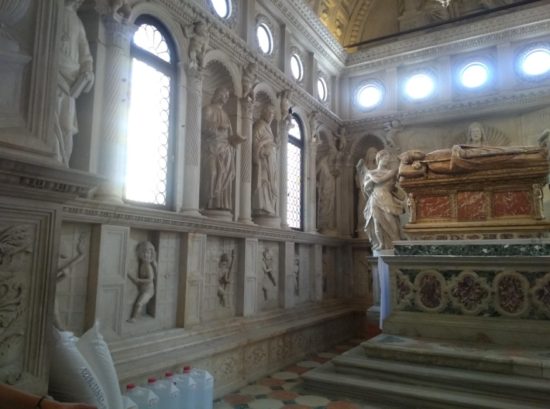
Chapel of St. John of Trogir in the Cathedral of St. Lawrence – Photo: (c) 2018 – Jim Fatzinger, The Travel Organizer
If Trogir has one “must see” site, it would be the three-naved Romanesque Cathedral of St Lawrence (Katedrala sveti Lovrijenac in Croatian). Construction of the current building began in 1213 on the site of an earlier cathedral; the main nave being completed in 1250. The cathedral’s bell tower, added between the 14th and 16th centuries, can be climbed for a fantastic panoramic view from the top. A highlight inside the cathedral is the Chapel of St John, the patron saint of the city (pictured here). This chapel, considered by many to be the most beautiful Renaissance monument in Dalmatia, was added in 1468. According to legend, John of Trogir, the bishop sent by Rome, walked on the waves to save the lives of the Croatian King Coloman and his entourage from a shipwreck nearby circa 1105. He died in 1111 and was beatified at the end of the 12th century. The sarcophagus in this chapel contains the bones of its eponymous saint. In 1240, Croatia’s most important medieval sculptor, Radovan, completed and signed the magnificent main (west) portal which depicts religious motifs and draws on scenes from everyday life in Trogir. Flanking the massive doors, Adam and Eve, holding strategically placed leaves, stand atop lions, symbols of Venice which ruled Trogir for almost 400 years. It’s easy to get so caught up in the detail and symbolism of the portal that one loses track of the fact that these sculptures were completed twice as long ago as the landing at Plymouth Rock!
Entree: Fascinating Split
Split began to realize its true tourism potential just five or six years ago. It is mind-blowing to realize that about 3,000 of Split’s residents quite literally live in a Roman Emperor’s palace! Area-wise, about half of Split’s Old Town is bounded by the still visible walls of the palace built by the early 4th century Roman emperor Diocletian. Unless one can visualize its original grandeur, it is impossible to fully appreciate how the palace has been transformed over the centuries into the 220 buildings now within its walls. Measuring 235 yards from north to south and almost 200 yards from east to west, Diocletian spared no expense in the construction and ornamentation of this combination military fortress, imperial retirement residence and fortified city. He imported marble from Italy and Greece and brought 12 black granite sphinxes dating from the 15th century B.C.E. from Egypt. Today, one can actually book luxury rooms inside the palace including free wine tasting, a culinary tour, laundry service and more at Diocletian’s Palace Experience Hotel.
Peristyle Square
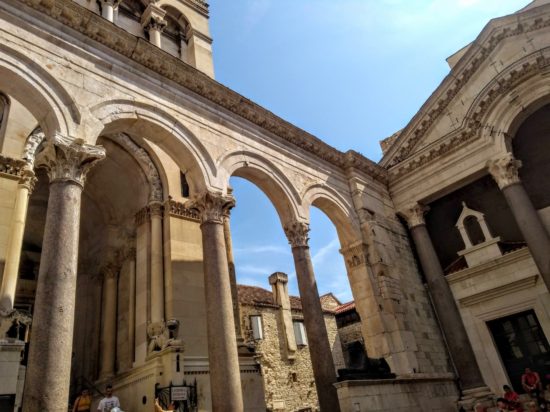
Peristyle Square (note the 3,500 black granite sphinx) – Photo: (c) 2018 – Jim Fatzinger, The Travel Organizer
One example of the way buildings have been adapted over the centuries is Peristyle (Peristil) Square. This public space was once the inner courtyard of Diocletian’s villa. The feeling one gets standing here amidst some of the best preserved Roman architecture anywhere in the world is that of time travel. Even Pope John Paul II exclaimed, upon entering the Peristyle in 2000, “Dear God, how many feet have stepped through here.” Now, as then, it often serves as a venue for musical or dramatic performances – or just a dreamy setting for an ice cream. In summer, locals dressed as Roman legionaries add to the scene. Be sure to notice the black-granite sphinx (pictured here) sitting between the columns near the cathedral; it is 3,500 years old! From Peristyle Square, one can enter the underground cellars which were a Game of Thrones filming location. Today, this passageway is an arcade of souvenir stands.
Diocletian’s Mausoleum/Cathedral of St. Domnius
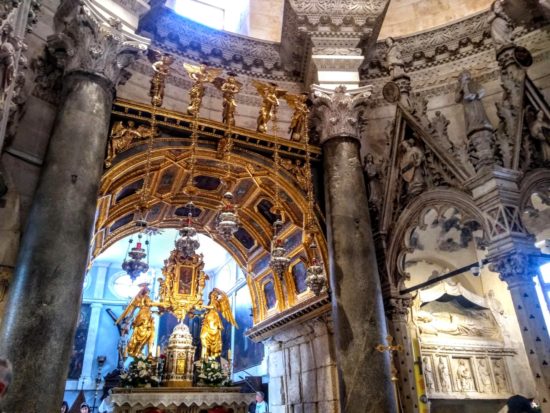
Interior, Cathedral of St. Domnius (Diocletian’s Mausoleum – Photo: (c) 2018 – Jim Fatzinger, The Travel Organizer
This impressive building with a fascinating history was constructed at the turn of the 4th century as the final resting place for Diocletian. Due to its position adjacent to the Peristyle in the section of the ancient palace used as the imperial residence, anyone arriving at the palace would notice its splendor from a distance. The mausoleum has many intriguing architectural details. Although its footprint is octagonal, the interior space is circular with a domed ceiling. The original Roman brickwork can still be seen even though it has been more than 1700 centuries since this building was completed. The bi-level columns on the interior walls are purely decorative as the walls are self-supporting. The wooden entrance doors, carved in the 13th century, depict scenes from the life of Christ in 28 scenes, 14 on each side. In 653, the mausoleum was consecrated as the Cathedral of St. Domnius, a bishop from the nearby town of Salona who was tortured and executed by Diocletian in 304, and has served as the city’s cathedral ever since.
Other features of Diocletian’s Palace complex
Jupiter’s Temple
Diocletian, who claimed to be a reincarnation of the Roman God Jupiter, had this mostly intact building erected to honor his eponymous deity. Today, it serves as the Baptistery for the Cathedral and houses a monumental sculpture of John the Baptist. The original barrel-vaulted ceiling consists of 64 panels, each depicting a different motif or human emotion. The temple is guarded by another Egyptian sphinx which has been defaced (literally) by Christians who considered it pagan.
Bell Tower
Construction of the 200 foot tall bell tower for Split’s Cathedral started in the 13th century. It was thoroughly reconstructed at the turn of the 20th century. Today you can climb 183 steep steps to the top and enjoy a spectacular view of old town Split.
Cardo and Decumanus Streets
The original palace walls each had a gate in the center named after a metal. The Golden Gate was the main entrance to the palace which Diocletian used when he entered his retirement villa for the first time on June 1, 305. It opens onto Cardo, which transects the palace complex in a north-south direction, ending at the Brass Gate in the opposite city wall. Similarly, Decumanus, running east-west, connects the Silver Gate in the west to the Iron Gate in the eastern wall. Cardo and Decumanus intersect just past Jupiter’s Temple and the Cathedral of St. Domnius with its bell tower.
Dessert: Paradox Wine and Cheese Bar
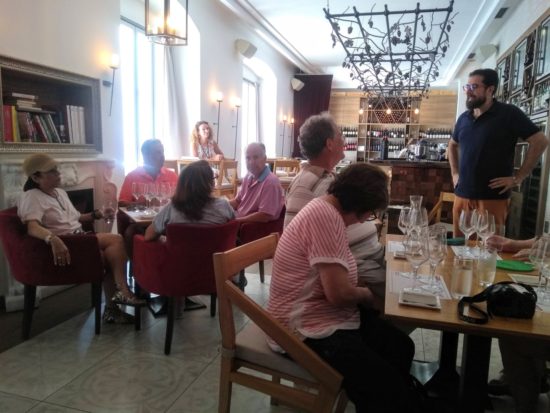
“Taste of Dalmatia” food and wine pairing at Paradox – Photo: (c) 2018 – Jim Fatzinger, The Travel Organizer
Paradox is a modern wine bar located less than 5 minutes’ walk from Diocletian’s Palace and just steps from Split’s waterfront. Dozens of wines are available to taste by the glass. Paradox promises to deliver the “ultimate Dalmatian wine experience” for oenophiles – a 45 to 90 minute food and wine pairing consisting of a selection of domestic and imported cheeses, prosciutto, seafood (dried, salted or marinated), quiche and homemade bread. Four tapas, each expertly paired with a different wine (2.5 ounces each), runs 37 Euros; 5 tapas and 5 wines (the best deal) is 43 Euros; while 6 tapas paired with 6 wines costs 50 Euros. If this sounds a little pricey, we chose the 4 tapas/4 wines option (consuming 40% of a 750 milliliter bottle of wine in the process) and it more than served as a full gourmet lunch.
About the Author:
I organize things; it’s what I do! I enjoy the natural adrenaline high of travel as much as the next person but I also try to limit the likelihood that the surprises I experience along the way will be unpleasant ones. To this end, I spend more hours than most preparing for each trip. Fortunately for me, I enjoy the anticipation of travel as much as the experience of it. The focus of my trip reports will be to help those who read them to enjoy high value experiences — maximizing enjoyment while minimizing cost. I’ve been a minister, nonprofit agency executive, professor and consultant; my “job” in retirement is planning our next trip. If you would like additional information and/or recommendations, please feel free to contact “The Travel Organizer” via email.
=====
To make sure you receive our latest deals, LIKE our The Flight Deal Facebook Page, follow us on Twitter @TheFlightDeal, Threads @TheFlightDeal or The Flight Deal WhatsApp channel or subscribe to The Flight Deal RSS Feed or Subscribe via Email (Once a Day)
The Flight Deal does not sell travel products or services. We provide you with information about third-party travel suppliers’ offers, and link you to their sites. The information posted by The Flight Deal is valid at the time of publication. However, we have no control over the suppliers, and we therefore do not warrant or guarantee that their offers will not change or become unavailable. Nor are we responsible for their products, services or site content. Please see their sites for their most up-to-date offer information and all applicable terms and conditions.
Sign up to receive The Flight Deal Daily DealsLetter, to stay up to date with the latest and greatest flight deals available.

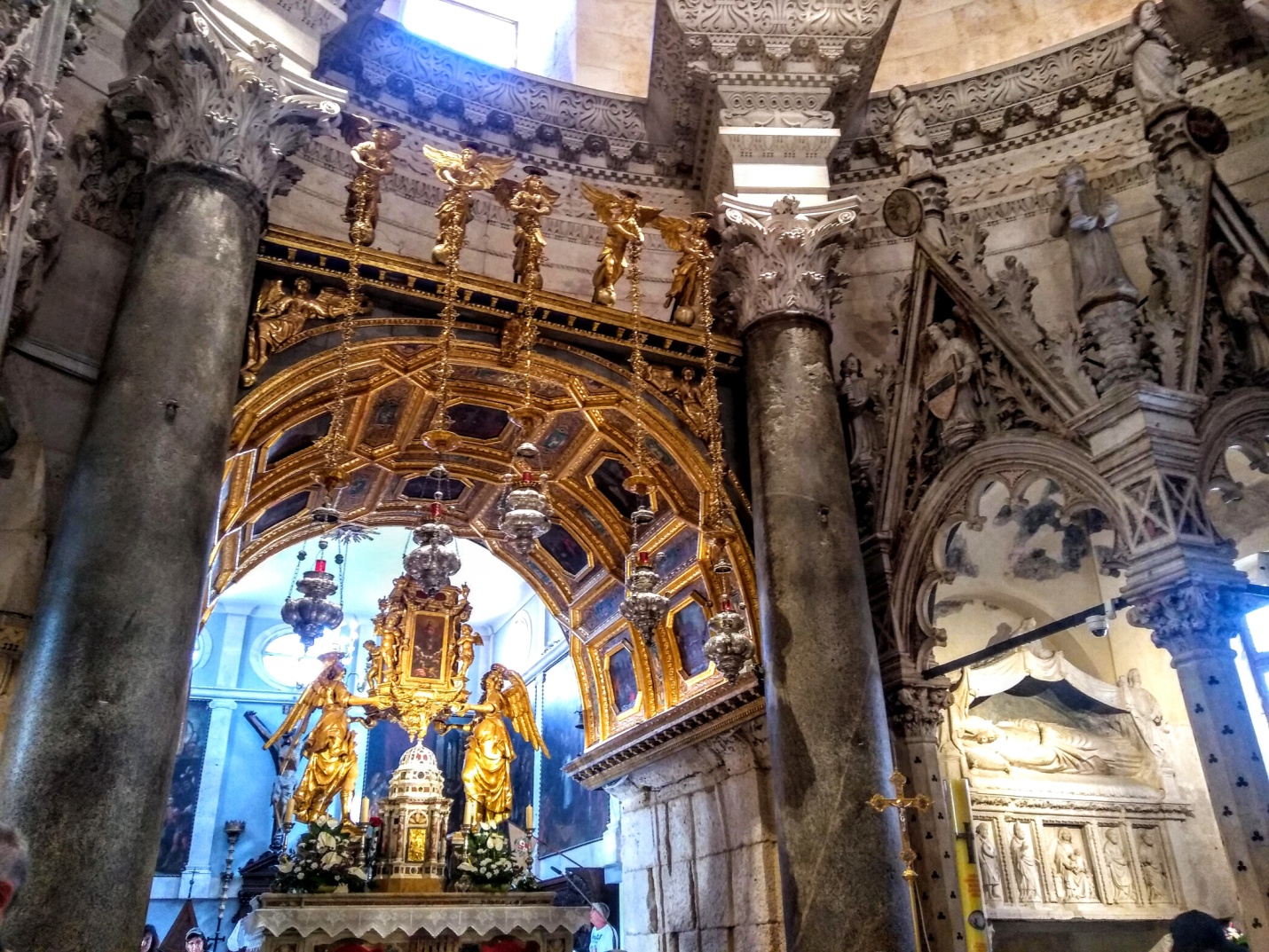
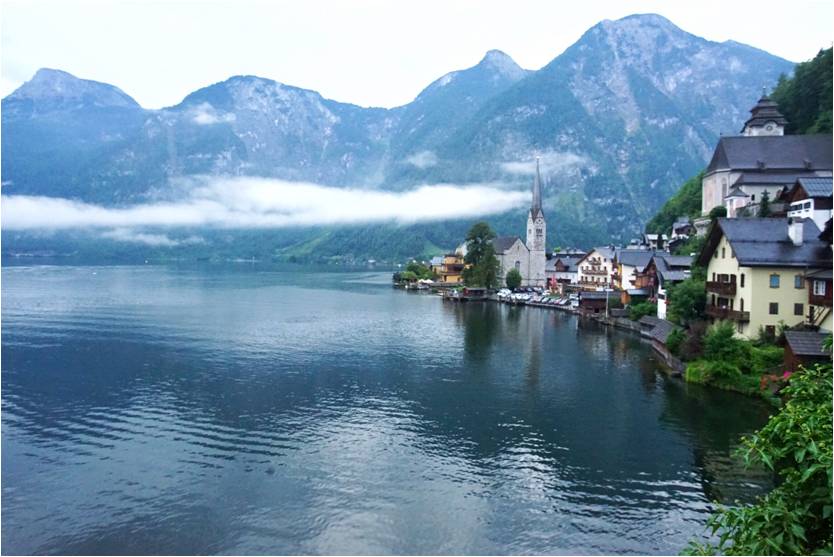
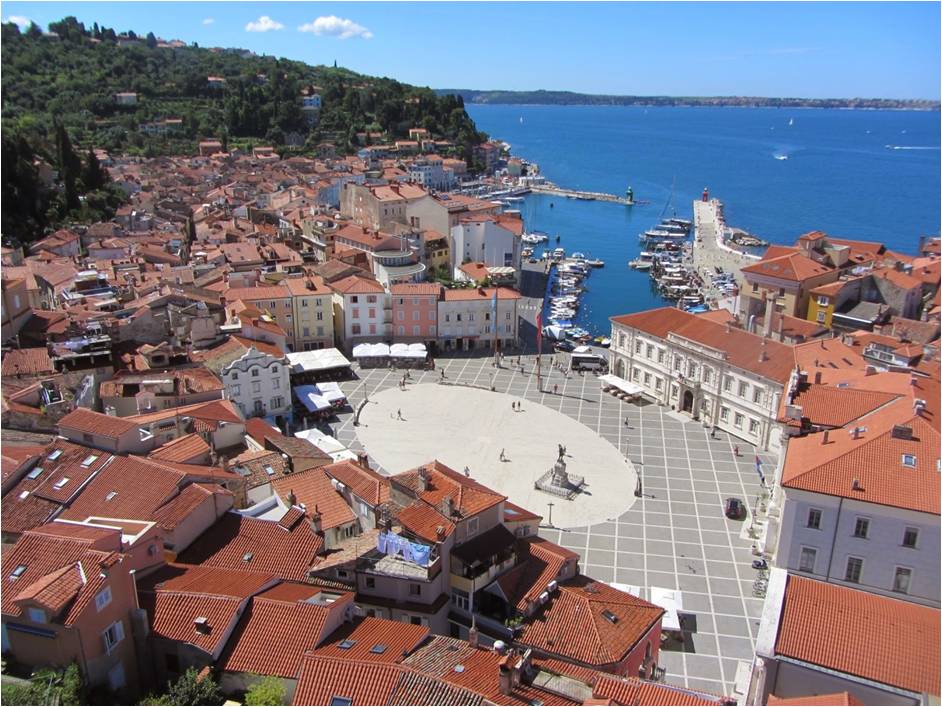
No Comments